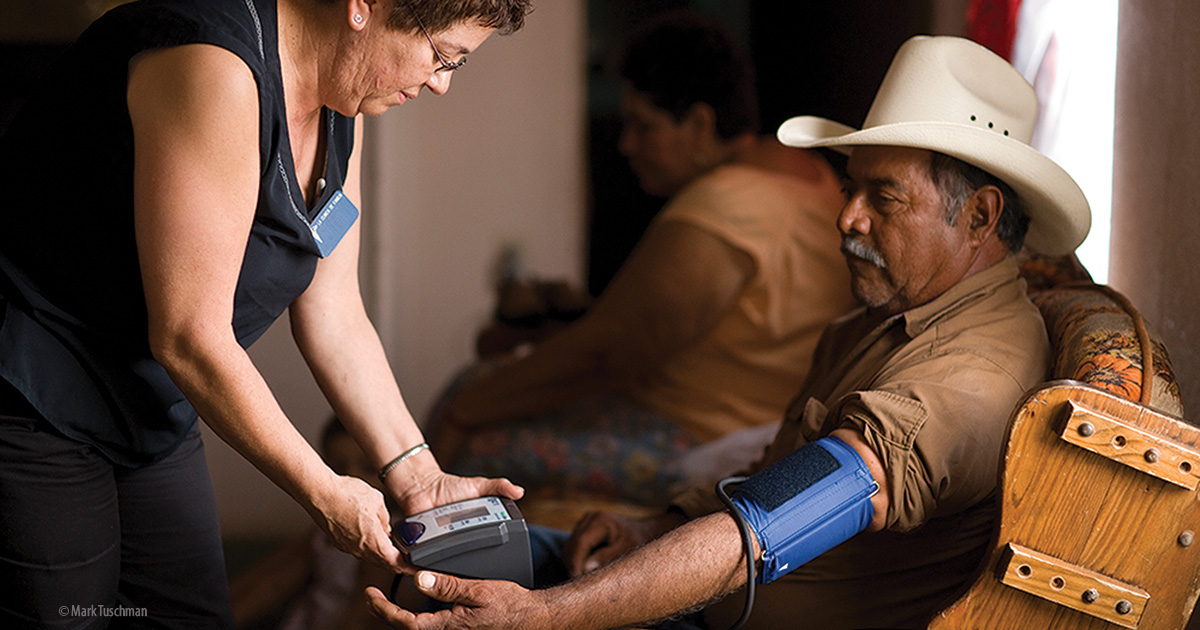Photos, Videos and Vignettes: How to Bring Global Health Topics to Life in the Classroom

Even pre-Covid, many global health students had little prior exposure to the key topics covered in a global health course. In addition, few students ever get opportunities to learn about key global health issues directly from people in marginalized communities and low-income countries. Vignettes, photos, videos, case studies, and guest talks by people with lived experience, however, can help bring to life a range of global health topics. Read on to learn how I use these tools in the classroom.
Telling Stories Through Vignettes
Vignettes can be a powerful tool for illustrating global health topics. For this reason, each core chapter of Global Health 101, Fourth Edition, begins with a series of vignettes. The vignettes are made up. However, they are all based on the experiences of real people.
Those who have never met anyone with malaria are moved when they read the vignette about the failure to seek timely care for a child with complicated malaria in Nigeria. Those unschooled on the social and cultural determinants of health will be provoked when they read about a woman in Pakistan who could not seek care when in labor because there was no male to accompany her to such care. Vignettes like these can be used as background reading. However, they can also be used to kick off classroom discussions on the “topic of the day.”
Using Photos to Provoke Discussion
Despite their static nature, photos can also be used to illustrate key topics or provoke discussion. The photos in Global Health 101, Fourth Edition include discussion questions, as well as captions. Most of our students have not seen young women in South Asia walking substantial distances with water jugs on their heads. Most of our students have not seen children lining up in West Africa to receive prophylactic treatment for neglected tropical diseases. Most of our students can’t imagine how many pills a day people have to take for TB–until the students see such pills.

Watching short videos together or in preparation for class can also be a very useful tool for launching well-grounded and valuable classroom discussion. YouTube, for example, contains thousands of videos that relate to global health. I do point students to “instructional videos” which can be a very useful supplement to other course materials. The videos on Greg Martin’s YouTube Channel, Global Health with Greg Martin, for example, are remarkably clever, punchy and cover a wide range of global health topics in captivating ways. To prompt discussion, however, I usually ask students before coming to class to watch videos that vividly demonstrate critical global health issues and how they are being addressed. You can find such videos with a search of topics such as maternal health, childhood immunization, neglected tropical diseases or topics like “total sanitation campaigns.” The ancillary materials for Global Health 101, Fourth Edition contain an annotated list of such videos. Professor Madhukar Pai, at McGill University, recently released a crowd sourced list of films on global health that will also be valuable teaching resources.
Leveraging Case Studies to Get Students Thinking
I am not good at teaching with “cases” like they use in business schools. Rather, I like to use “case studies” mostly to help students think about how one moves from identifying a problem to deciding how the problem can be addressed in doable, sustainable, cost-effective, and fair ways. Thus, Global Health 101, Fourth Edition contains 47 “case studies” and the ancillary materials for the book contain many more such cases. Some cases describe country or global efforts to tackle problems and what can be learned from such efforts. A few of these are “classic” efforts, which everyone should know about, such as the Smallpox Eradication Program or the Onchocerciasis Control Program. Other case studies focus on particular topics, such as ethical policy making, culture and health, maternal health, nutrition, or TB.
Inviting Guest Lecturers to Lend Experience
It is also critical that we bring to the classroom people with lived experience. This could be people from one’s own community who have lacked access to health care, gone bankrupt trying to pay for care, or whose ill health is intimately tied to their social and economic circumstances. It could be people who have lived with the health conditions such as reproductive health issues, TB, or HIV. We can also bring to the classroom people who have worked in country to address key issues. A friend of our family headed clinical work on Ebola in Liberia for a humanitarian organization. He spoke virtually with my students – and brought them to tears with his moving comments about how Ebola affected the community he served and about his own work. While not all of us can get such people physically in the classroom, many of us will be able to get them into the classroom virtually or on video.
There are many ways of bringing topics to life in a manner that engages students and excites them about global health. I have used photos, videos, case studies, and guest speakers to add a dimension to the classroom that I could not bring alone—even with many examples from more than 40 years as a global health practitioner.
About the author:
Richard Skolnik, MPA, has spent more than 40 years working on international development and global health and was formerly a lecturer in the Yale School of Public Health, the Yale School of Management, and the George Washington University School of Public Health.
Request a digital review copy of his book, Global Population Health: A Primer
Request a digital review copy of his book, Global Health 101, Fourth Edition
